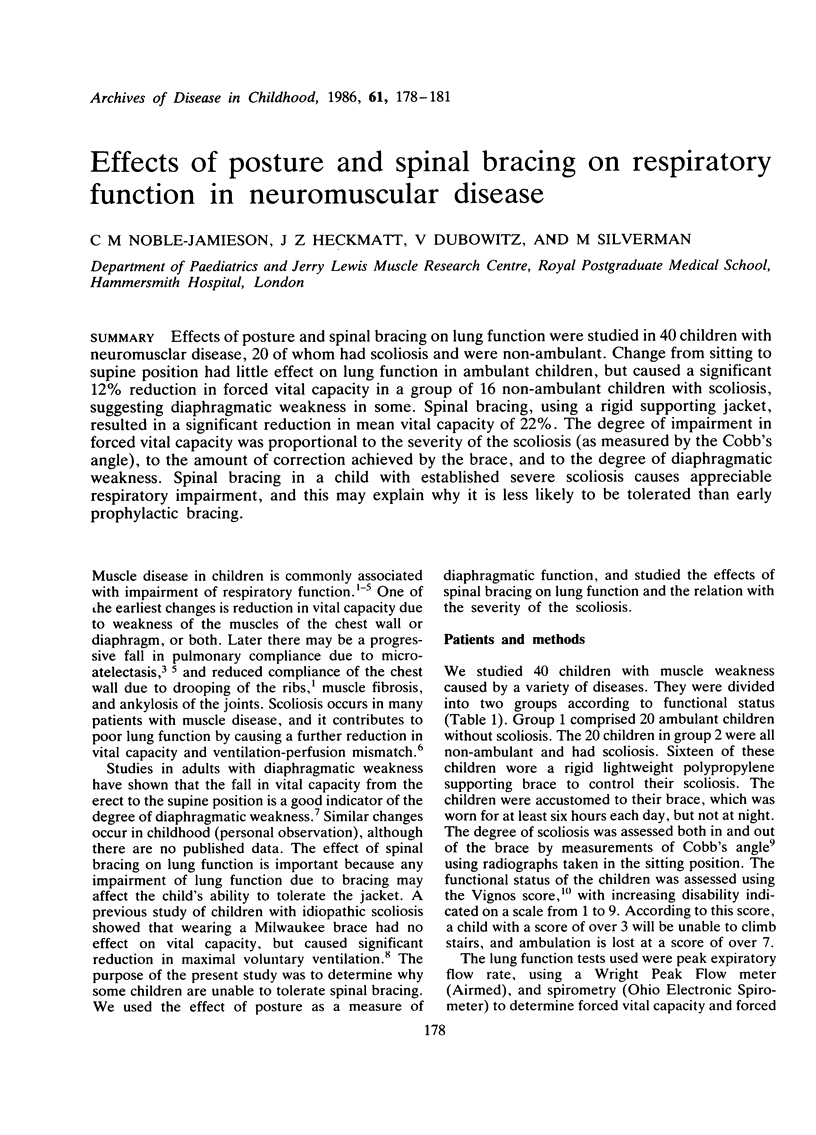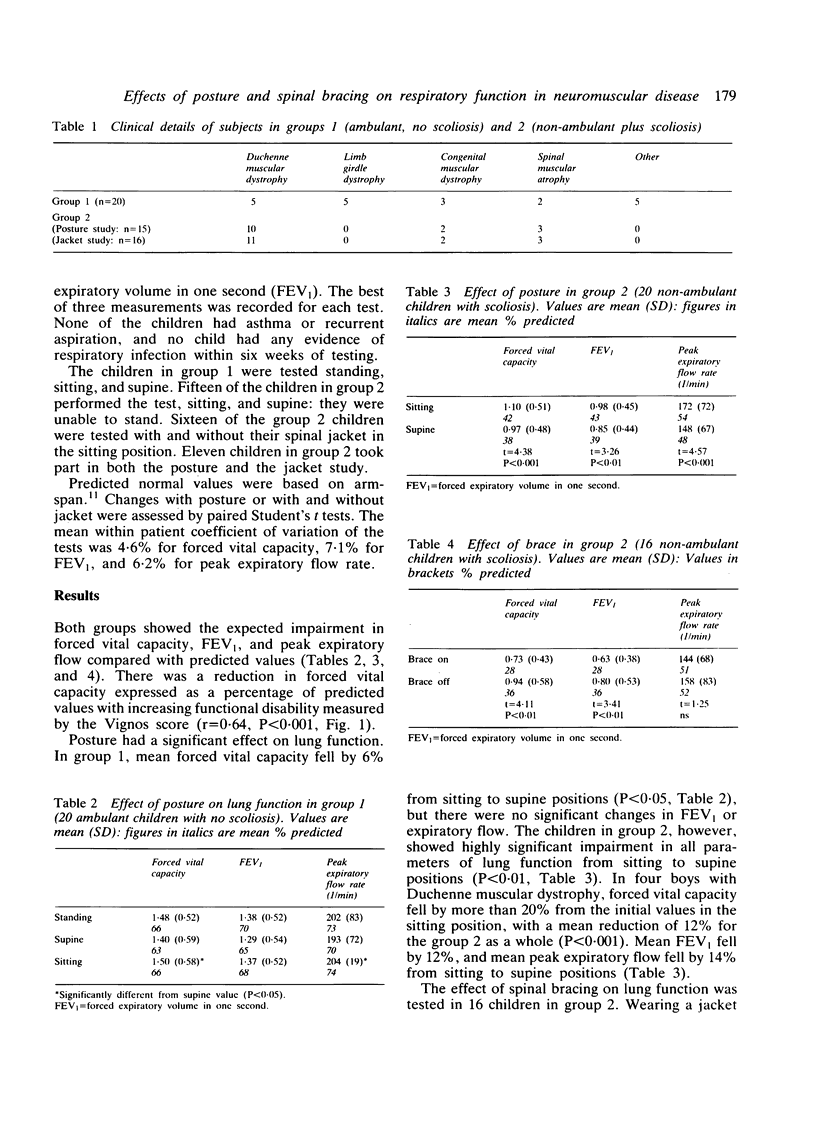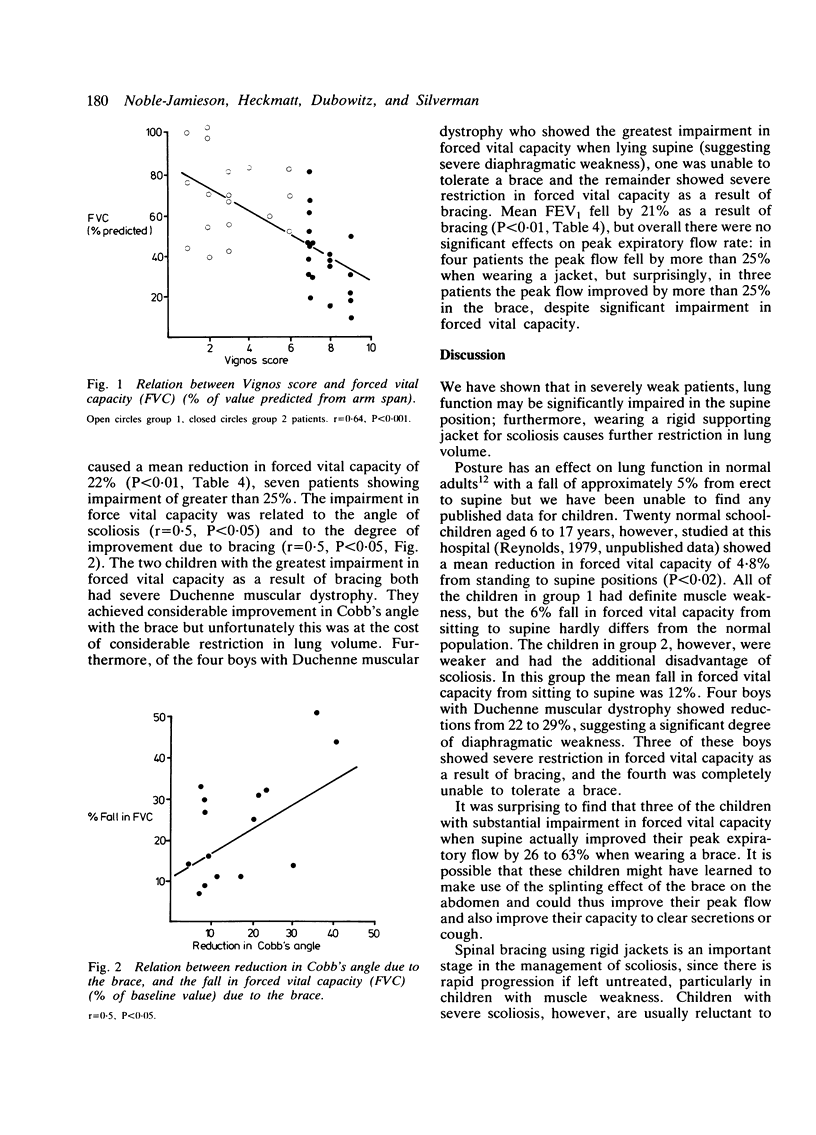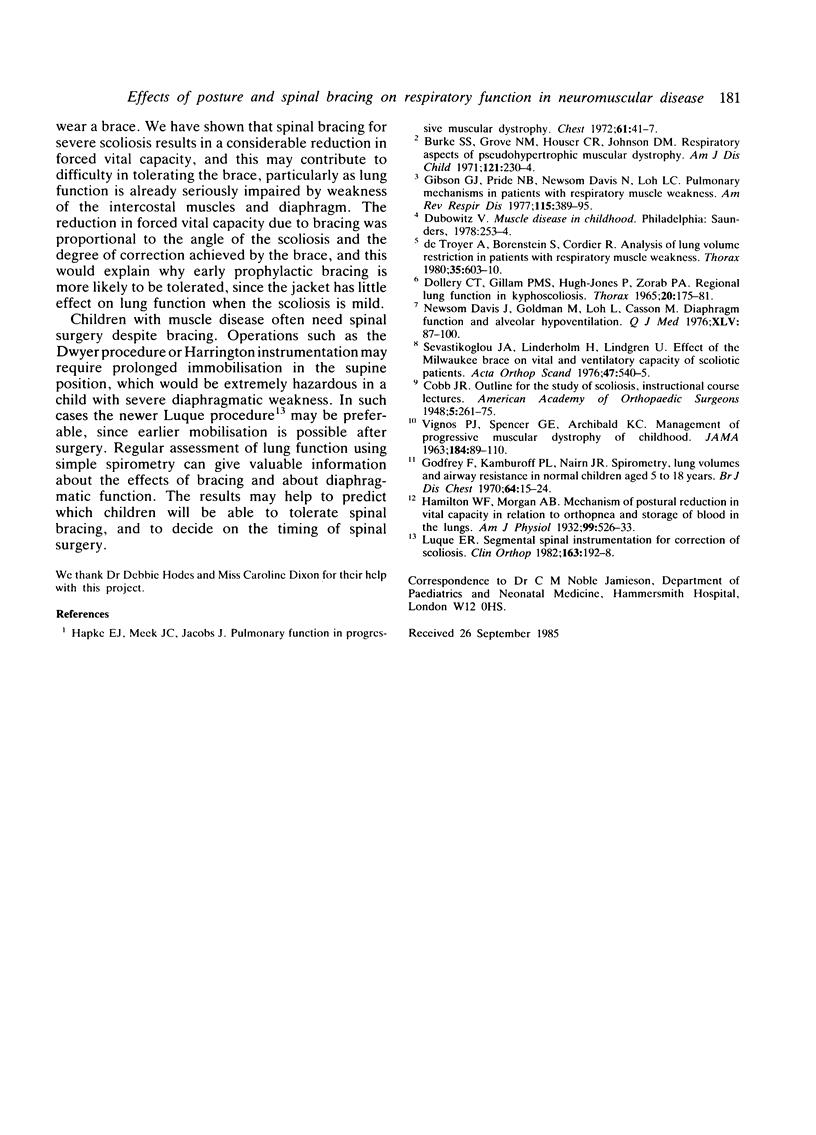Abstract
Effects of posture and spinal bracing on lung function were studied in 40 children with neuromuscular disease, 20 of whom had scoliosis and were non-ambulant. Change from sitting to supine position had little effect on lung function in ambulant children, but caused a significant 12% reduction in forced vital capacity in a group of 16 non-ambulant children with scoliosis, suggesting diaphragmatic weakness in some. Spinal bracing, using a rigid supporting jacket, resulted in a significant reduction in mean vital capacity of 22%. The degree of impairment in forced vital capacity was proportional to the severity of the scoliosis (as measured by the Cobb's angle), to the amount of correction achieved by the brace, and to the degree of diaphragmatic weakness. Spinal bracing in a child with established severe scoliosis causes appreciable respiratory impairment, and this may explain why it is less likely to be tolerated than early prophylactic bracing.
Full text
PDF



Selected References
These references are in PubMed. This may not be the complete list of references from this article.
- Burke S. S., Grove N. M., Houser C. R., Johnson D. M. Respiratory aspects of pseudohypertrophic muscular dystrophy. Am J Dis Child. 1971 Mar;121(3):230–234. doi: 10.1001/archpedi.1971.02100140096009. [DOI] [PubMed] [Google Scholar]
- DOLLERY C. T., GILLAM P. M., HUGH-JONEP, ZORAB P. A. REGIONAL LUNG FUNCTION IN KYPHOSCOLIOSIS. Thorax. 1965 Mar;20:175–181. doi: 10.1136/thx.20.2.175. [DOI] [PMC free article] [PubMed] [Google Scholar]
- Davis J., Goldman M., Loh L., Casson M. Diaphragm function and alveolar hypoventilation. Q J Med. 1976 Jan;45(177):87–100. [PubMed] [Google Scholar]
- De Troyer A., Borenstein S., Cordier R. Analysis of lung volume restriction in patients with respiratory muscle weakness. Thorax. 1980 Aug;35(8):603–610. doi: 10.1136/thx.35.8.603. [DOI] [PMC free article] [PubMed] [Google Scholar]
- Gibson G. J., Pride N. B., Davis J. N., Loh L. C. Pulmonary mechanics in patients with respiratory muscle weakness. Am Rev Respir Dis. 1977 Mar;115(3):389–395. doi: 10.1164/arrd.1977.115.3.389. [DOI] [PubMed] [Google Scholar]
- Godfrey S., Kamburoff P. L., Nairn J. R. Spirometry, lung volumes and airway resistance in normal children aged 5 to 18 years. Br J Dis Chest. 1970 Jan;64(1):15–24. doi: 10.1016/s0007-0971(70)80045-6. [DOI] [PubMed] [Google Scholar]
- Hapke E. J., Meek J. C., Jacobs J. Pulmonary function in progressive muscular dystrophy. Chest. 1972 Jan;61(1):41–47. doi: 10.1378/chest.61.1.41. [DOI] [PubMed] [Google Scholar]
- Luque E. R. Segmental spinal instrumentation for correction of scoliosis. Clin Orthop Relat Res. 1982 Mar;(163):192–198. [PubMed] [Google Scholar]
- Sevastikoglou J. A., Linderholm H., Lindgren U. Effect of the Milwaukee brace on vital and ventilatory capacity of scoliotic patients. Acta Orthop Scand. 1976 Oct;47(5):540–545. doi: 10.3109/17453677608988734. [DOI] [PubMed] [Google Scholar]


